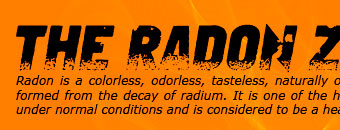 |
 |
 |
||||
|
||||||
| Call: 417-844-0942 | ||||||
|
»Radiation in Tobacco This page provides a brief overview of radiation in tobacco and its effect on smokers Overview Every year 440,000 people die in the US from tobacco use and smoke-related diseases, which is approximately 20% of all deaths in the United States. Cigarettes kill more Americans than alcohol, car accidents, suicide, AIDS, homicide, and illegal drugs combined. While not an obvious source of radiation exposure, cigarette smokers inhale radioactive material that, over time, contribute large radiation dose to the lungs. Worse, smokers are not the only ones affected by the radiation in cigarettes. Second-hand can be just as harmful to nearby non-smokers. Naturally-occurring radioactive minerals accumulate on the sticky surfaces of tobacco leaves as the plant grows, and these minerals remain on the leaves throughout the manufacturing process. Additionally, the use of the phosphate fertilizer Apatite – which contains radium, lead-210, and polonium-210 – also increases the amount of radiation in tobacco plants. The radium that accumulates on the tobacco leaves predominantly emits alpha and gamma radiation. The lead-210 and polonium-210 particles lodge in the smoker’s lungs, where they accumulate for decades (lead-210 has a half-life of 22.3 years). The tar from tobacco builds up on the bronchioles and traps even more of these particles. Over time, these particles can damage the lungs and lead to lung cancer. |
|
|||||